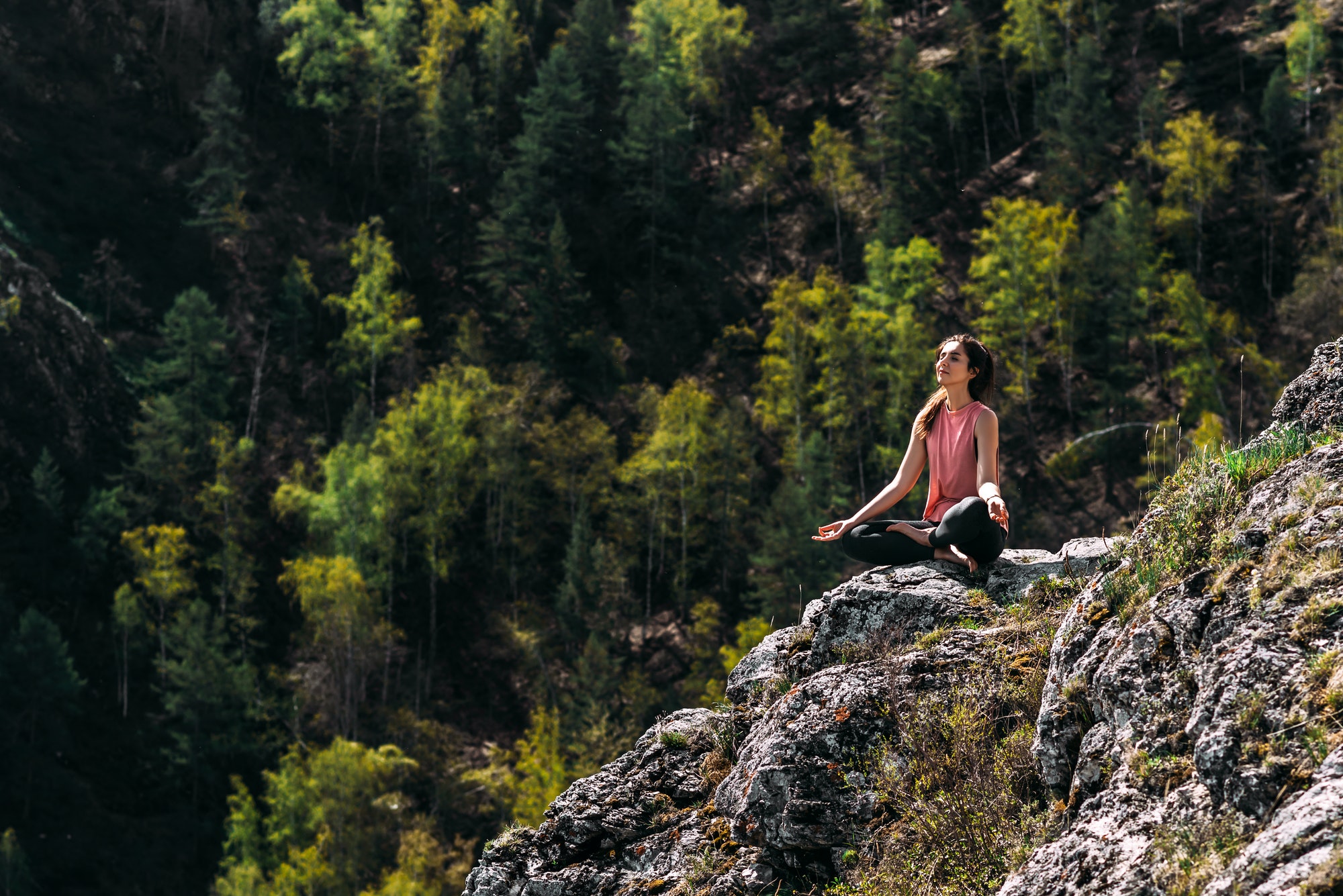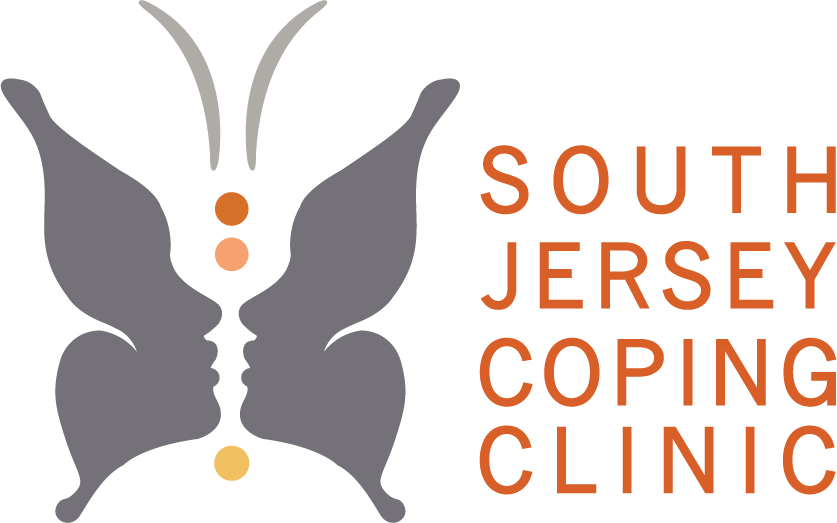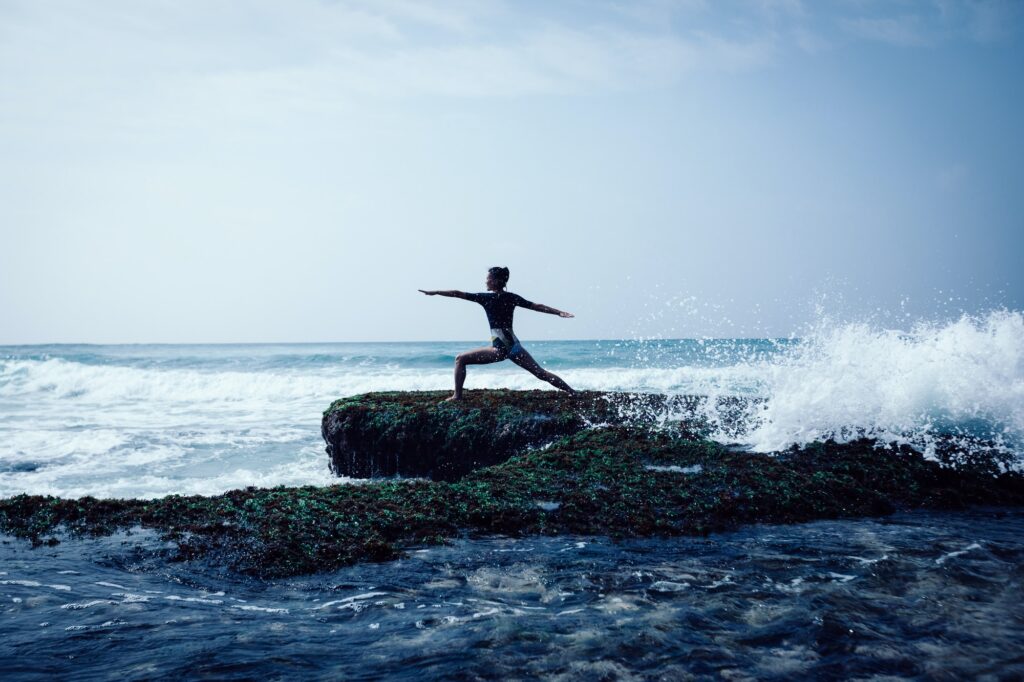Does Face Yoga Work? Quick Insights:
– Effectiveness: Face yoga may offer modest anti-aging benefits.
– Research: Limited scientific studies, with some suggesting potential improvements in skin appearance.
– Considerations: Results require consistency and time—3 to 4 weeks with daily practice.
– Alternatives: A low-risk option compared to injectables or cosmetic surgery.
Face yoga is sweeping through social media, promising a natural way to age gracefully—without the need for needles or surgery. But does it truly hold the key to a youthful appearance, or is it just another wellness trend with more style than substance? Here at South Jersey Coping Clinic, we know that our clients, busy professionals in Marlton, NJ, seek effective, holistic approaches to not only mental health but overall well-being. Thus, faced with the challenge of sifting through mixed messages, we’ve invited five experts to share their insights on the effectiveness of face yoga. This method, which involves specific facial movements and exercises, has been lauded for its potential to rejuvenate the skin, reduce wrinkles, and restore facial fullness. But with limited research and a wide range of opinions, what’s the truth?

When every penny and minute count, understanding the real value of face yoga is crucial for anyone considering it as part of their self-care routine.
Expert 1: Dermatologist’s Perspective on Face Yoga
The Science Behind Face Yoga
Face yoga is a fascinating intersection between ancient yoga practices and modern dermatological knowledge. At its core, face yoga consists of various exercises designed to stimulate and tone the facial muscles. According to some limited studies, face yoga might improve the appearance of the skin by enhancing blood circulation and lymphatic drainage, which in turn can give the skin a more youthful glow.
One study highlighted by the Cleveland Clinic suggests that engaging in facial exercises can lead to an increase in muscle thickness and potentially lead to a fuller appearance of the face, which is often associated with youthfulness. However, it’s important to note that the scientific community is still in the early stages of researching face yoga’s effectiveness, and more comprehensive studies are needed to draw definitive conclusions.
Potential Risks and Disadvantages of Face Yoga
While the idea of toning your face with simple exercises may sound appealing, it’s not without potential downsides. Some experts, including dermatologists, caution against the practice due to the risk of increasing wrinkles. Dr. Chen, a noted dermatologist, warns that repetitive facial movements—the cornerstone of face yoga—can actually contribute to the very wrinkles individuals are trying to prevent. This is because many facial lines, such as crow’s feet and laugh lines, are the result of repeated muscle movements over time.
Moreover, there’s a risk of misapplication of face yoga techniques. Without proper guidance, individuals may overexert certain muscles, leading to uneven muscle development or increased strain on the skin. This emphasizes the importance of seeking advice from qualified professionals when exploring face yoga as a skincare routine.
At the South Jersey Coping Clinic, we advocate for a holistic approach to well-being, recognizing that practices like face yoga can offer benefits beyond skin deep. However, we also stress the importance of an informed and balanced approach, taking into account both the potential advantages and the limitations of such practices. For those interested in exploring the benefits of yoga for overall well-being, including stress reduction and increased mindfulness, we offer a range of yoga classes guided by experienced instructors. Explore our Kundalini Yoga classes for a transformative journey of self-discovery and empowerment.
In summary, while face yoga may hold promise for some individuals looking to enhance their facial appearance naturally, it’s crucial to proceed with caution and seek professional guidance. Balancing expectations and being aware of potential risks are key steps in integrating face yoga or any new wellness practice into your routine.
Expert 2: Yoga Instructor’s Insight on Face Yoga
As we delve deeper into the question, “does face yoga work?” understand it from the perspective of those who’ve been integrating yoga principles into wellness practices for years. At the South Jersey Coping Clinic, our approach is holistic, focusing on the entire being—mind, body, and spirit. Here, we share insights from our yoga instructors on how face yoga aligns with traditional yoga principles and its potential benefits for relaxation and improved sleep.
The Philosophy and Principles of Face Yoga
Face yoga is not merely a set of facial exercises; it’s a practice that intertwines with the age-old philosophy of yoga. At its core, yoga teaches us to harmonize our inner and outer selves, aiming for a state of balance and well-being. Similarly, face yoga is designed to bring awareness and relaxation to the face, an area often holding tension without us even realizing.
The principles guiding face yoga are similar to those in traditional yoga—awareness, mindfulness, and consistency. By regularly practicing face yoga, you’re not only engaging the muscles of the face but also fostering a deeper connection with your body. This mindful practice encourages you to observe areas of tension and learn relaxation techniques, ultimately promoting a sense of calm and well-being.
How Face Yoga Promotes Relaxation and Better Sleep
One of the key benefits of face yoga, as noted by our instructors, is its ability to promote relaxation and better sleep. Here’s how:
- Reduces Tension: Many of us carry stress in our facial muscles without even realizing. Practices like the “Brow Smoother” or “Neck Massage” help release this tension, leading to a more relaxed state that’s conducive to sleep.
- Improves Blood Circulation: Exercises that stimulate blood flow to the face can have a soothing effect, similar to the relaxation one feels after a gentle yoga session. This increased circulation can help in calming the mind, making it easier to fall asleep.
- Encourages Mindfulness: The act of performing face yoga requires focus and mindfulness, drawing your attention away from daily stresses and towards the present moment. This mindfulness can significantly improve sleep quality by reducing stress and anxiety levels before bedtime.
- Promotes Healthy Routines: Integrating face yoga into your nightly routine can signal to your body that it’s time to wind down, similar to how a cup of tea or reading a book might. This routine can become a cue for your body to prepare for rest, aiding in a more restful night’s sleep.
At the South Jersey Coping Clinic, we understand the importance of a holistic approach to wellness. Whether it’s through Kundalini Yoga, Trauma-Informed Yoga, or the gentle practice of face yoga, we’re here to support your journey towards a healthier, more balanced life. Our yoga practices, guided by skilled instructors like Sarah Rickert, are designed to awaken your inner power and promote a state of well-being that encompasses both mind and body. Discover more about our unique approach to yoga and wellness by exploring our Kundalini Yoga offerings or learning about our holistic health therapies.
In summary, face yoga offers a unique blend of relaxation techniques and exercises that not only aim to improve facial appearance but also enhance overall well-being. By incorporating face yoga into your daily routine, you’re taking a step towards harmonizing your body, mind, and spirit—embracing a holistic approach to health that can lead to better sleep and a more relaxed state of being.
Expert 3: Cosmetic Surgeon’s View on Face Yoga
When considering facial rejuvenation and maintenance, the perspective of a cosmetic surgeon is invaluable. In this section, we explore how face yoga compares with cosmetic procedures and the long-term effects it may have.
Comparing Face Yoga with Cosmetic Procedures
Cosmetic procedures, such as Botox, fillers, or surgical facelifts, offer immediate and noticeable results in reducing wrinkles and improving skin tightness. These methods work by either temporarily paralyzing the facial muscles to prevent wrinkle formation or by filling in the lost volume beneath the skin.
On the other hand, face yoga aims to achieve a more youthful and toned appearance through a natural, non-invasive approach. By engaging in regular facial exercises, proponents of face yoga believe it can strengthen facial muscles, increase blood circulation, and promote collagen production. While the effects of face yoga may take longer to become apparent—typically three to four weeks with consistent practice—some see it as a more sustainable and holistic alternative to cosmetic interventions.
However, it’s crucial to note that the improvements from face yoga are generally subtler and may not replace the dramatic results achievable through cosmetic procedures. As Sebastian Cotofana, an associate professor of anatomy at Mayo Clinic, points out, facial muscles behave differently from other body muscles, and the stress you can apply through face yoga may be limited in its capacity to induce significant muscle hypertrophy or volume increase.
The Long-Term Effects of Face Yoga
The long-term effects of face yoga are a topic of ongoing discussion among professionals. While there is an agreement that face yoga is unlikely to harm and may offer benefits such as improved blood flow and potentially better muscle tone, maintain realistic expectations about its efficacy.
Cosmetic procedures provide lasting results for months or even years, depending on the type of treatment. In contrast, the benefits of face yoga require ongoing commitment and may vary significantly among individuals. Some may experience noticeable improvements in skin tone and facial muscle tightness, while others may find the results less pronounced.
In terms of addressing concerns like a double chin, face yoga can offer gradual improvements by toning the underlying muscles. Yet, it’s important to recognize that factors such as genetics, overall body weight, and skin elasticity also play significant roles in the appearance of a double chin, which may limit the effectiveness of facial exercises alone.
In conclusion, face yoga represents a natural and holistic approach to facial care that, when practiced consistently, may offer benefits such as improved muscle tone and skin appearance. However, it’s not a direct substitute for cosmetic procedures, which provide more immediate and pronounced results. At South Jersey Coping Clinic, we believe in a balanced, individualized approach to wellness, incorporating practices like face yoga as part of a broader strategy for health and well-being. Our goal is to support you in finding the methods that best suit your needs and lifestyle, whether that includes face yoga, other holistic practices, or professional cosmetic treatments.

For those interested in exploring holistic wellness further, including practices like Kundalini Yoga, we invite you to learn more about our offerings here.
Expert 4: Physiotherapist’s Analysis of Face Yoga
Face Yoga is gaining traction as a non-invasive method to improve facial appearance and overall well-being. As physiotherapists, we’re keenly interested in how physical exercises, including those for the face, can enhance health. Let’s dive into the role of facial muscles in face yoga and its potential benefits beyond aesthetics.
The Role of Facial Muscles in Face Yoga
Facial muscles are unique because they’re directly attached to the skin. This means that when they contract, your skin moves, leading to expressions. Over time, repetitive expressions can lead to wrinkles. However, face yoga targets these muscles, aiming to relax and tone them, which can potentially smooth out wrinkles and give a more youthful appearance.
Moreover, engaging in face yoga exercises stimulates blood circulation to the face. Enhanced blood flow brings more oxygen and nutrients to the skin, which may contribute to a healthier, more radiant complexion. This is one way how face yoga potentially works to improve skin health.
How Face Yoga Can Improve Posture and Reduce Headaches
Interestingly, face yoga doesn’t just stop at the face. It can have benefits that extend to improving posture and reducing headaches. Many of us spend hours hunched over computers and smartphones, leading to neck strain and poor posture. Certain face yoga exercises encourage movements that counteract these effects. For example, exercises that involve lifting the head and stretching the neck can help realign the spine, promoting better posture.
Furthermore, tension in the facial and neck muscles often contributes to tension headaches. By relaxing these muscles through face yoga, it’s possible to alleviate some of this tension, thus reducing the frequency or severity of headaches. This is especially beneficial for our clients at South Jersey Coping Clinic who are looking for natural ways to manage stress and its physical manifestations.
In conclusion, face yoga offers a holistic approach to wellness that aligns with our mission to provide individualized care and promote holistic health. By incorporating face yoga into your routine, you’re not just working towards a more youthful appearance, but also improving your posture and potentially reducing headaches. It’s a simple, risk-free practice that fits well into a holistic wellness approach, offering benefits that go beyond skin deep.
For those looking to explore holistic wellness practices further, including face yoga and its benefits, we invite you to explore our range of services designed to support your journey toward holistic health here.
Expert 5: Psychologist’s Take on Face Yoga
Face yoga isn’t just about the external changes; it’s about the internal transformation it can bring. From a psychologist’s perspective, the practice of face yoga offers unique psychological benefits that contribute to overall well-being and mental health.
The Psychological Benefits of Face Yoga
Stress Reduction: Just like traditional yoga, face yoga can be a powerful tool for stress relief. Engaging in these exercises helps to release tension held in the facial muscles, often a result of stress. This physical release can signal the brain to lower stress levels, promoting a sense of calm and relaxation.
Improves Mindfulness: Face yoga encourages individuals to focus on the present moment. Concentrating on the movements and sensations in the face enhances mindfulness, which has been linked to improved mental health outcomes, such as reduced symptoms of anxiety and depression.
Enhances Self-Image: Regular practice of face yoga can lead to subtle changes in one’s appearance, such as a more relaxed and youthful look. These changes, though modest, can boost self-esteem and body image. Seeing visible improvements can also motivate individuals to adopt other healthy lifestyle choices.
Face Yoga as a Tool for Self-Love and Gratitude
Cultivating Self-Love: Face yoga is a practice of self-care. By dedicating time to nurture one’s appearance and well-being, individuals are practicing self-love. This can reinforce the belief that they are worthy of care and attention, fostering a positive relationship with oneself.
Grounding in Gratitude: Through face yoga, individuals can develop a deeper appreciation for their unique features and the functionality of their facial muscles. This gratitude for one’s body and abilities can extend beyond physical appearance, contributing to a more positive outlook on life.
Encouraging Patience and Persistence: The benefits of face yoga, much like those from traditional yoga, are not immediate. They require consistent practice and patience. This process can teach individuals the value of persistence and the beauty of gradual progress, lessons that are valuable in all areas of life.
At South Jersey Coping Clinic, we understand the importance of a holistic approach to wellness that includes mental, physical, and emotional health. Our services, including therapeutic practices like Reiki and virtual reality therapy, are designed to support your journey toward holistic health. Just like face yoga, these practices offer benefits that extend beyond the surface, contributing to a sense of peace, well-being, and self-acceptance.
In conclusion, face yoga can be more than just an anti-aging regimen; it’s a practice that nurtures the mind and spirit. By integrating face yoga into your self-care routine, you’re not just working towards a more youthful appearance but also enhancing your mental health and cultivating a deeper sense of self-love and gratitude.
Conclusion: The Verdict on Face Yoga’s Effectiveness
Face yoga has sparked a lot of interest and debate. People are curious: does face yoga work? After hearing from experts in dermatology, yoga instruction, cosmetic surgery, physiotherapy, and psychology, it’s clear that face yoga is more than just a trend. It’s a multifaceted practice with potential benefits and some considerations.
Balancing the Pros and Cons of Face Yoga
The effectiveness of face yoga comes down to a delicate balance. On one hand, limited studies suggest it might improve the appearance of the skin and provide mental health benefits. It encourages relaxation, promotes better sleep, and can even be a tool for self-love and gratitude. On the other hand, some experts warn about the potential for exacerbating wrinkles or aggravating skin conditions.
Face yoga exercises, when done correctly and consistently, may offer modest improvements in facial appearance. However, overdoing it or improper technique could potentially lead to more harm than good. The key is moderation and correct practice.
The Importance of Individualized Approach in Face Yoga
At South Jersey Coping Clinic, we understand that each person’s journey with face yoga, like any other wellness practice, should be highly individualized. What works wonderfully for one person might not yield the same results for another. This is why an individualized approach is crucial. It’s important to consider personal goals, skin type, and any pre-existing conditions before diving into face yoga.
We offer a range of holistic health services that complement the practice of face yoga, including Kundalini Yoga and other wellness practices that consider your mental, physical, and spiritual well-being. By adopting a holistic approach, we aim to ensure that your face yoga practice is not only safe but also beneficial in the long run.
In conclusion, while face yoga holds promise for some, it’s not a one-size-fits-all solution. It’s another tool in the toolbox of holistic wellness practices, valuable for those who find it enjoyable and beneficial. Like any wellness practice, it’s most effective when tailored to meet individual needs and goals. Whether you’re seeking to improve your skin’s appearance, enhance your psychological well-being, or simply explore a new self-care practice, face yoga might be worth considering. However, it’s essential to approach it with realistic expectations and, ideally, under the guidance of professionals who can help tailor the practice to your unique situation.
For more information on integrating face yoga into a holistic wellness routine, explore our various services and approaches to mental and physical health at South Jersey Coping Clinic.







